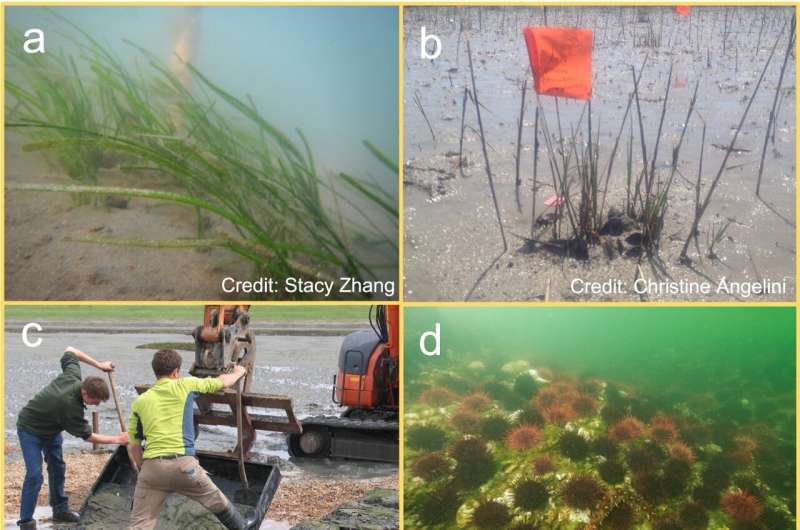Enhancing coastal restoration by including animals

A Griffith University led study has shown how animals can have enormous impacts on coastal restoration, both positive and negative.
Published in BioScience, the authors demonstrate how a broader knowledge of the interactions between particular animal species and restored coastal habitats could be better incorporated into restoration planning, implementation, and evaluations to maximize the success of global efforts to restore coastal systems.
"With ecosystems becoming increasingly lost and degraded, restoration has become one of the key challenges of the 21st century," said Dr. Michael Sievers, ARC DECRA Fellow at the Australian Rivers Institute.
"For this reason, the number coastal ecosystem restoration projects are increasing, but it is critical that efforts and investments are targeted to most effectively mitigate and reverse habitat and biodiversity loss."
Yet one aspect crucial for effective restoration of habitats like seagrass, mangroves, and corals is being largely overlooked, and that is the explicit consideration of the role of non-habitat forming animals such as fish, crustaceans and bivalves in the restoration process.
"Restoration without animals is like gin and tonic without the gin; there's something important missing, it doesn't quite work, and it's unlikely to achieve the desired outcome," Dr. Sievers said.
Animals can perform important functions and services within an ecosystem which are essential for the persistence and resilience of the system as a whole and which restorations seek to enhance. Such functions can spur vegetation growth.
"Translocating clams into restored seagrass, for example, can cause seagrass patches to expand to five times the size of those without clams, primarily due to their ability to increase the availability of nitrogen," Dr. Sievers said.
"For saltmarshes, placing mussels alongside the transplanted vegetation similarly enhances plant growth and leads to an expansion of the saltmarsh by 50% due to reductions in sulfur and increased nutrient levels."
But it's not all roses, some animals can be bad for restoration. While mega-herbivores like green sea turtles and dugongs can improve seagrass seed germination, they can also detrimentally overgraze seagrasses. On a smaller scale, the presence of lugworms which turn over the sediment can disturb planted seagrasses the researchers point out.
"When we're armed with this type of knowledge about animal interactions during the restoration process, we can remedy it. For instance, adding a barrier underneath transplanted seagrass can reduce the interactions between seagrass and the lugworm, and consequently enhance seagrass growth by 50-140%."
By identifying when, why, and how to directly incorporate or manipulate animals in coastal restoration we can improve outcomes for habitat-forming species like mangroves, seagrasses and corals.
By providing a framework to identify and undertake such actions, we ultimately hope to encourage scientists and managers to better consider animals for coastal restoration planning, implementation, and monitoring.
More information: Michael Sievers et al, Greater Consideration of Animals Will Enhance Coastal Restoration Outcomes, BioScience (2022). DOI: 10.1093/biosci/biac088
Journal information: BioScience
Provided by Griffith University



















